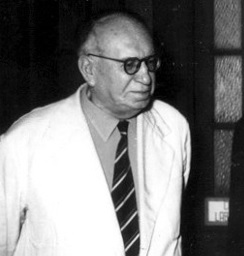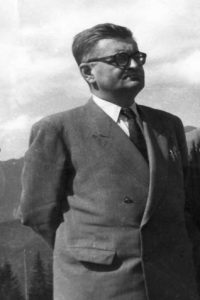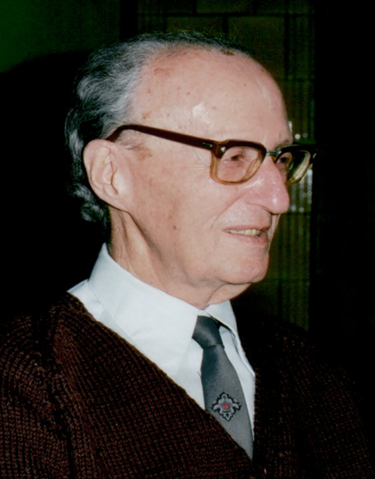National Institute Of Materials Physics - Romania
History

The Institute of Physics of the Romanian Academy was established in 1949. Its founding father, Horia Hulubei (PhD in Paris under Nobel Prize winners Pierre and Marie Curie) is a world famous scientist for his outstanding results in various areas of physics, including RAMAN, X rays, Compton, atomic and nuclear physics. In 1956, the Institute of Physics, of the Romanian Academy, splits according to a political decision into an Institute of Atomic Physics (IFA), located at Magurele and the Bucharest Institute of Physics (IFB), based initially at the Faculty of Physics in the old edifice of the Bucharest University, and later in a building at 114 Calea Victoriei Street. The head of this Institute, Acad. Prof. E. Badarau, former Professor at Sankt Petersburg and Cernautzi Universities, was a promoter of Romanian school of physics, being actively implied in the electrical discharges in gases and plasma studies. In 1969 the Bucharest Institute of Physics has moved in a new and well equipped building in Bd. Pacii 222. The Institute moved again in 1974, at the present location in Magurele, Atomistilor 405A. The Institute of Physics and Technology of Materials came into being in 1977 by the union of some laboratories belonging to the Bucharest Institute of Physics and the Institute of Atomic Physics (IFA-Bucharest). The actual name (National Institute of Materials Physics-NIMP) was given in 1996 after a national accreditation procedure (re-accreditation in 2008 and 2016). Among important personalities which have been active in the Institute during the last fifty years we must mention: Acad. Eugen Badarau, Acad. Radu Grigorovici, Acad. Ioan Iovitz Popescu, Acad. Margareta Giurgea, Acad. Rodica Manaila, Acad. Vladimir Topa and others (see also OUTSTANDING LEADERS AND SCIENTISTS). A succession of directors, including Viorel Visarion, Pompiliu Nicolau, Andrei Mezincescu, Alexandru Glodeanu, Danila Barb, Mircea Morariu, Alexandru Aldea, Stefan Frunza, and Lucian Pintilie headed the Institute in the years from 1990 to 2013. Ionut Enculescu took over as general director of NIMP in February 2013. NIMP developed during the years as one of the elite research institutions in Romania. Over 35 million of euro were invested in a new laboratory building, equipped with state-of-the-art equipment, and in rehabilitation of the Otetelesanu mansion, the headquarter of the first Institute of Physics of the Romanian Academy. NIMP is among the founders of the Central European Research Infrastructure (C-ERIC, https://www.ceric-eric.eu/), it is associated member of the French Speaking Universities (AUF, https://www.auf.org/), and has under its umbrella a category 2 UNESCO center (“CENTRE INTERNATIONAL DE FORMATION ET DE RECHERCHE AVANCÉES EN PHYSIQUE”, http://cifra.infim.ro/).
Personalities
PROFESSOR EUGEN BADARAU (1887-1975) – the founder and the first director of the Institute

Born in Ismail (December 19, 1887), professor Badarau absolved the College in Chishinau in 1905. He continued his studies in Technische Hochschule, Graz, Austria, and in the University of Pisa, Italy (1907-1911). He obtained the Philosophical Degree under the leadership of Prof. Batelli with the thesis “Constanta dielettrica dei gasi”. In the interval 1915-1918 is firstly assistant and then docent-professor in the University of Petersburg, Faculty of Sciences, Russia. Between 1918 and 1921 he is professor in the Photo-Technical Institute of Petersburg. In 1921 he returned in Romania and is appointed as professor in the University of Cernauti. In 1935 Eugen Badarau moves to the University of Bucharest as full professor. After the foundation of the Institute of Physics of the Academy, Professor Badarau became the vice-director of this Institute. From 1956 to 1970 (his retiring year) was director of the Institute of Physics – Bucharest.The scientific works of Prof. E. Badarau comprise 120 original memoirs, papers, reviews and books, in the field of electrical discharges in gases and plasma physics, acoustics, optics and spectroscopy.Professor Badarau was a member of the Academy of Sciences, ROMANIA.
PROFESSOR FLORIN CIORASCU (1914-1977) – Director of the Institute: 1970 – 1977

Born in Barlad, July 3, 1915. High studies in Physics in the University of Iasi (1936) and in Electrotechnics, Polytechnical Institute of Iasi (1938). Then he was appointed as assistant and later lecturer in the Faculty of Sciences in Bucharest. In 1963 he becomes full professor in the Faculty of Physics, University of Bucharest. After the foundation of the Institute of Physics he became scientific director (1950-1957). After the retiring of Professor Eugen Badarau in 1970, Professor Ciorascu was appointed as Director of the Institute of Physics – Bucharest. Professor Ciorascu died in 4-th of March, 1977, 21:20/HEO/ during the strongest earthquake produced in Romania in the 20-th century. His research activities were in the field of electrical discharges in gases, thin metallic films, and metrology of the nuclear radiations. Prof. Ciorascu trained for 28 year the students of the Faculty of Physics in the field of Electrical Measurements, Electronic Methods in Nuclear Physics and Fundamentals of Electro- and Radio technics. Prof. Ciorascu was a talented manager and dedicated the major part of his activity to the organization of the research in physics in Romania.
PROFESSOR RADU GRIGOROVICI (1911-2008) – Vice-Director of the Institute: 1957-1973

Born November 20, 1911, Cernauti (Austro-Hungary). Studies in Chemistry (1931) and in Physics (1933) in the University of Cernauti (Romania). After finihing his high studies Radu Grigorovici was appointed as assistant in the Department of Experimental Physics of the University (Department leader: Professor Eugen Badarau). In 1937 he moved to the University of Bucharest. There he finished his Ph. D. Thesis (1938) entitled: Disruptive potential in Hg vapour. Scientific Advisor: Prof. E. Badarau. In 1960 he occupied the position of tenure in the Faculty of Mathematics and Physics of the University of Bucharest and teached optics for the students of the Physical Section. Radu Grigorovici was appointed in 1960 as Chief of Department in the Institute of Physics – Bucharest, and, three years later, in 1963, was appointed Vice-Director of the Institute. Professor Grigorovici retired in 1973 but continued to work in the institute with his pupils for more than 20 years. After the revolution of December 1989, he was elected as Vice-President of the Academy of Sciences of Romania. Professor Grigorovici is now continuously interested in the research in the physics of condensed matter. Professor Grigorovici published a high number of papers in the field of: electrical discharges in gases, high frquency torch, flame spectral analysis, trichromatic colorimetry, thin metallic films and, last but not least, amorphous semiconductors. The main achievement of Prof. Grigorovici was in the field of amorphous semiconductors. He and his collaborators developed the first structural model for an amorphous semiconductor (germanium) in 1969 and put the basis of the amorphous semiconductor field in the world research. His contribution in this field was mentioned in the Nobel Conference by Sir Nevil Mott, the recipient of Nobel Prize in Physics for 1977.
Copyright © 2025 National Institute of Materials Physics. All Rights Reserved